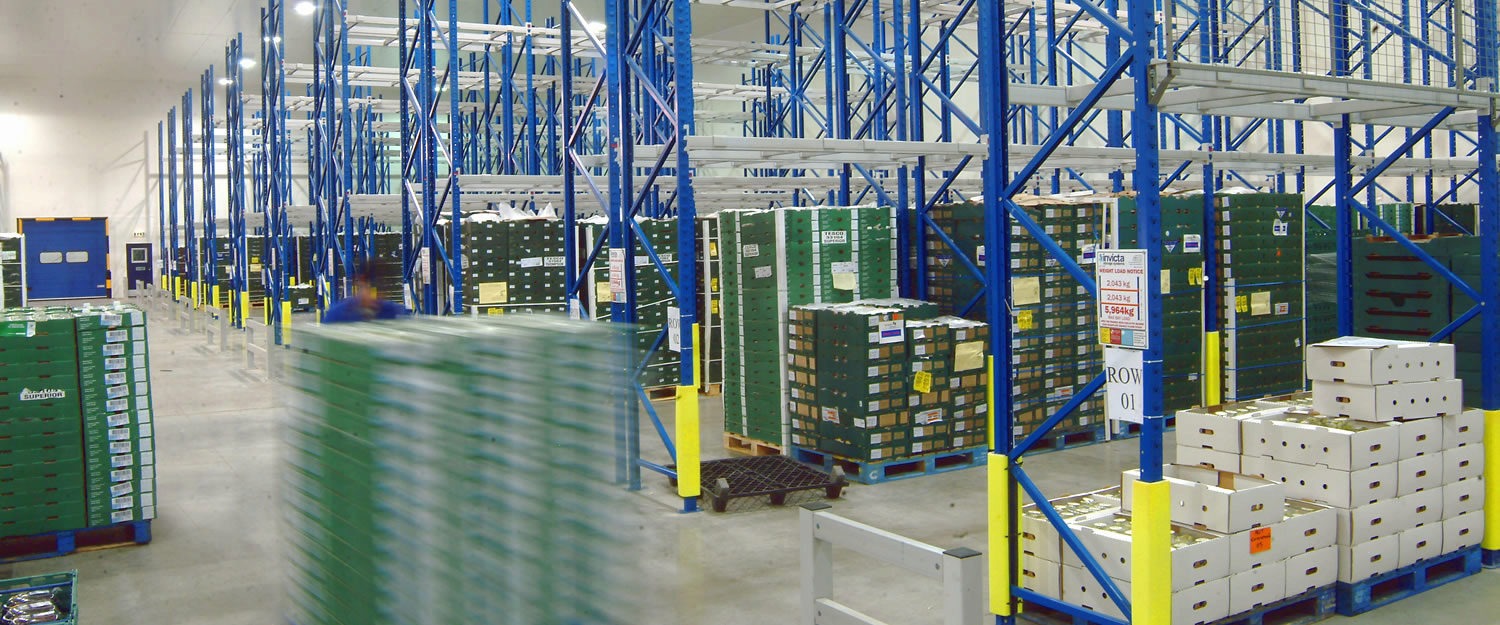For your information
You are being redirected to one of our divisional subsites which contains more detailed information on the required division. To navigate back to the main Invicta Group site, please click the link found in the footer at the bottom of the page.
5 ways bad back of house storage is hampering your retail store
26th September 2022
Quick Quote
Contact Mick Coyne
To get a quotation or arrange a free site survey - Call Mick Coyne on
-
 UK
UK
Current location:
Quick Quote
Contact Mick Coyne
-
 UK
UK
Current location:
With the whole high street now embroiled in a battle with online giants, the experience of retail shopping is being trumpeted above all else. From treasure troves of unusual items to Instagrammable shelves and décor, many shop fronts are designed within an inch of their lives to appeal to potential customers.
Yet while attention is lavished on the front-of-house experience, the back-of-house can be neglected – to the eternal cost of the business in question. While good front-of-house design is important, shoddy back-of-house storage can undermine both the efforts of employees and the customer experience. Here are five examples of how poor back-of-house storage affects your daily operations, and how a revamp could revitalise your retail business.
It costs you money
Ever had a customer ask for something, only to find that it isn’t in stock? Perhaps they looked it up online and it showed as being in stock, but your inventory was mismanaged. Perhaps you thought it was in stock but it wasn’t, and you spent minutes hunting for it back-of-house, while the customer loitered out front. Or maybe they found the perfect item on the shelf, but it had a mark on it, and you had to scrabble around to find a replacement or issue a discount.
These sorts of errors start behind closed doors, and only escalate the longer they are ignored. A poorly organised and maintained back-of-house storage area can easily disrupt your inventory management, and curtail your staff’s efforts to find things. The more time they spend having to find an item, the less time they’re spending front-of-house, helping to convert visitors into sales. And there’s always the chance that a customer simply leaves, unsure as to when or if the member of staff is coming back.
Wastage is also an important aspect of back-of-house storage. Regardless of what goods you’re selling, poor storage techniques – as well as racking or shelving that hasn’t been designed to store those goods – can lead to damage, whether it’s from impacts or scuffs and marks. This stock can unknowingly make its way out onto the shop floor, where it either stays unbought until a member of staff notices it, or is bought without a customer realising (and then returned). The item then has to be either discounted or discarded – directly costing you money.
It puts off customers
Ask any retail manager: it’s harder to get customers through the door than it is to keep them coming back. At least, it is when you do the right things. When you’ve finally got someone to come in and commit to purchasing something, your absolute priority should be to establish brand loyalty, and give them a reason to come back for more. Poor back-of-house storage puts this in jeopardy, and lessens the chance that they’ll commit to buying from your brand.
Better back-of-house storage is properly adapted to your products, keeping them tidily and efficiently stored. By making it clear where everything is and making it easy to locate and pick products – including different colours and sizes of the same item – retrieval times can be increased, and errors in stocktaking can be reduced. Minimise these frustrations, and you should minimise the frustration of your customers – making for a smooth and pleasant shopping experience.
It upsets your staff
As a rule of thumb, staff are happiest when they can get on with their jobs without distractions or impediments. If they’re meant to be assisting customers front-of-house, they probably don’t want to be wading through a jumble sale of goods in your back-of-house storage. Not only would this time be better spent helping customers, but they will also have to deal apologetically with the customer who made the enquiry, who has to wait for them to return with the item.
It isn’t just the disorganised nature of some back-of-house storage areas that are a concern for employees. Poorly managed and maintained back-of-house storage can be a safety hazard too, and one that staff fear to be around. Stock on the floor can be a trip hazard, while items might also be precariously balanced on shelves, posing a risk of falling onto staff.
Simply being in a cramped, claustrophobic and confusing space like this can be an anxious experience, but this is amplified by health & safety issues such as having to reach for items, lift or move things out of the way, or keep a constant eye out for new and dangerous hazards. These problems are not only legal issues, but can also cause employees to tread lightly around the storage area, making the process of retrieval and storage even slower.
It disrupts your operations
As anyone who’s ever waited half an hour for an appointment knows, minor inefficiencies tend to stack. Overrun a little bit in one task, and you rarely have the opportunity to make that time up. By the end of the day, you’re stretched to breaking point, causing people to have to wait longer and impacting on your bottom line. The same principle applies to your storage area, where clutter slows people down, and small mistakes cause problems to snowball.
Your back-of-house storage is the epicentre of your operations, and the hub around which everything revolves. As well as hosting your stock, it’s also often where administrative tasks are completed, where orders are filed and received, and where employees escape for lunch breaks. A poorly designed back-of-house storage solution causes a chain reaction of chaos that permeates the entire organisation, interrupting people’s breaks and impeding your ability to get work done.
Your back-of-house shouldn’t be a mire that employees have to slog through to find anything, or a place they dread going. It shouldn’t be an impediment to your front-of-house, or a place that’s seen as ancillary to the process of selling your products. If you value efficiency, organisation and presentation from your staff, you need to project this from every aspect of your business – and this should start with your back-of-house storage.
It stymies your growth
Whether you’re part of a chain or an independent outlet, it’s likely that you have some room to grow. Whether that’s physically expanding your premises or simply expanding your lines and inventory, it’s always valuable to have a bit of room to grow into, or to repurpose should something come up. Brexit is a prime example of this, with many businesses stockpiling goods due to the potential for disruption at the border.
A disorganised or poorly constructed storage area tends to mean that stock is inefficiently stored, meaning that more space than necessary is required to store all of your goods. High density back-of-house racking or shelving could save as much as 50% of the space you’re currently using – space which could either be used to store twice as many goods, or repurposed for other uses. A more efficiently designed storeroom could even enable you to expand your front-of-house, showing off more stock and enabling you to entice more customers.
—
While there are always other options to make the most of your storage space – a mezzanine floor, for example – simply improving the efficiency of your back-of-house storage is the most sensible and wide-reaching option. By replacing or adapting your existing storage solution, you’ll not only create more space but also make your business more efficient – making it more likely that you’ll grow enough to utilise it. To learn more about our range of back-of-house storage options, warehouse racking or our fire protection services, get in touch with us today.
Accreditations & Affiliations







Start your project
Tell us about your project. Please complete this form. One of our sales team will come back to you with more details. If you prefer, you can drop us an email.




Share/Like this page